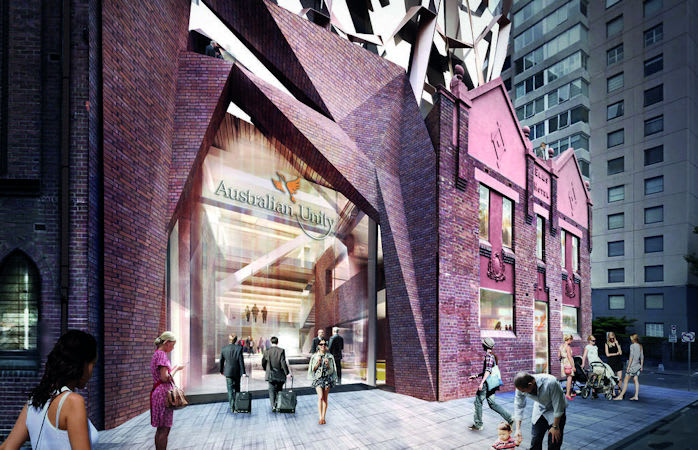Key sticking points hammered out as ISPT seeks approval for its Spring Street tower
The development team behind one of Melbourne's most recent commercial tower applications has had right of reply to City of Melbourne's varied concerns regarding their proposal located at 267-271 Spring Street.
Property fund manager and developer ISPT has Australian Unity pencilled in as the prospective project's tenant, with John Wardle Architects handed the task of creating the modern edifice above the current low-rise heritage buildings onsite. Post the project's submission during June of this year, City of Melbourne have raised concerns regarding a variety of aspects relating to the development.
Last week Urbis responded on behalf of the development team.
Many of City of Melbourne's concerns focus on the project's impact upon the heritage buildings in the immediate area, along with the appropriateness of the tower's form. The concerns in many ways mirror the stance taken by Melbourne Heritage Action, which considers the proposal to be demonstrative to the heritage precint's overall existing character.
Not only will the proposed office block involve the facadism of the 1925 Elms Family Hotel, it will dominate other heritage buildings on the site, like the 1913 Mission Hall, and the cottage on Casselden Place behind. It will also destroy some of the last remnants of the famous (infamous!) ‘Little Lon’ district, including the last section of Griffin Lane, and two small-scale 1920s red brick buildings that do not have individual heritage protection.
Melbourne Heritage Action believes that the precinct as a whole, from the Mission in Spring Street down to Oddfellows Hotel, is one that should obviously have been made a Heritage Precinct many years ago. This group of buildings not only creates an area and streetscape that hasn’t changed since the 1920s, but is the largest intact remnant of the notorious ‘Little Lon’ area.
Melbourne Heritage Action
As of last week 38 objectors had taken their concerns to Council.
Urbis' response acknowledges the concerns raised by the objectors, while also asking Council to consider the "balance of objectives sought by the planning scheme and the extended consultation process conducted between the proponent and Council." Further to this Urbis point out that 267-271 Spring Street with Australian Unity in tow would be a boost to the CBD's economic success, given very few permitted commercial developments have proceeded to construction within the CBD during recent years.
For the most, the development team's response justifies the design ethos and outcome of the originally submitted scheme. Essentially Urbis' response adds further weight to the development team's stance, rather than making wholesale changes to the tower's design.
Concerns regarding heritage issues, setbacks to Spring Street and Littler Lonsdale Street, the project's perceived community benefit (or lack of), overshadowing and overlooking have all been addressed by Urbis. Following consultation with Melbourne Heritage Action and other vested parties, the only discernible changes to the proposal have been to retain the internal rear and side walls of the Elms Hotel and a change to the podium treatments to Little Lonsdale by way of additional glazing.
Beyond the above machinations, 267-271 Spring Street's fate lies in the hands of City of Melbourne, with a final approval decision likely to be some months away.
